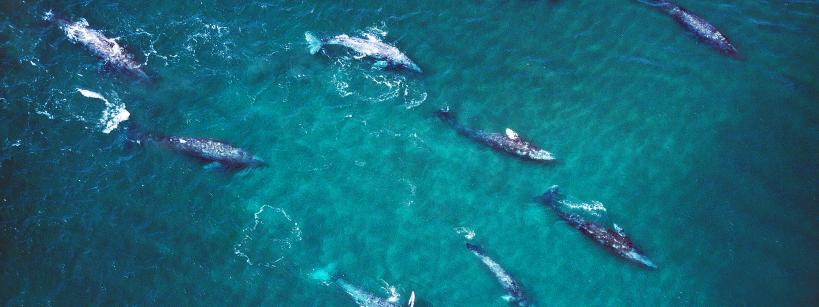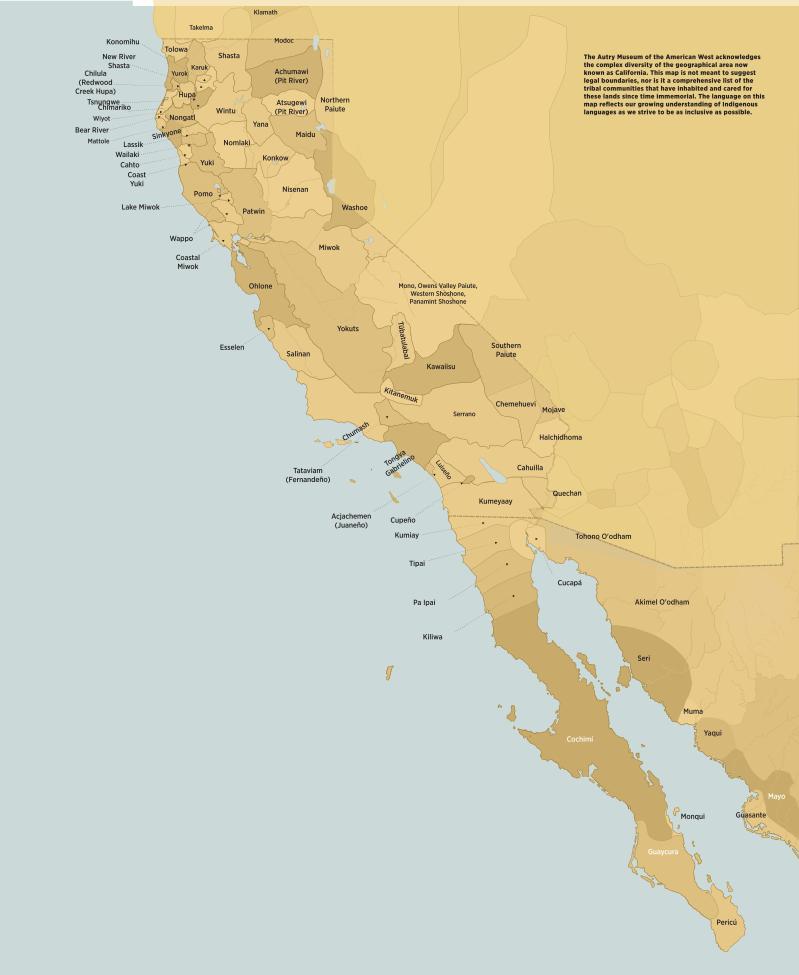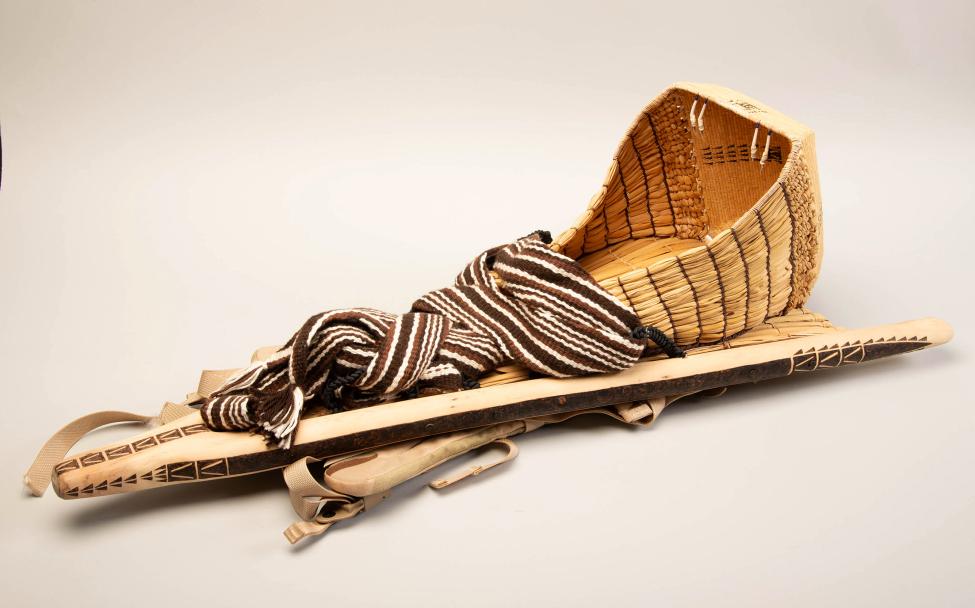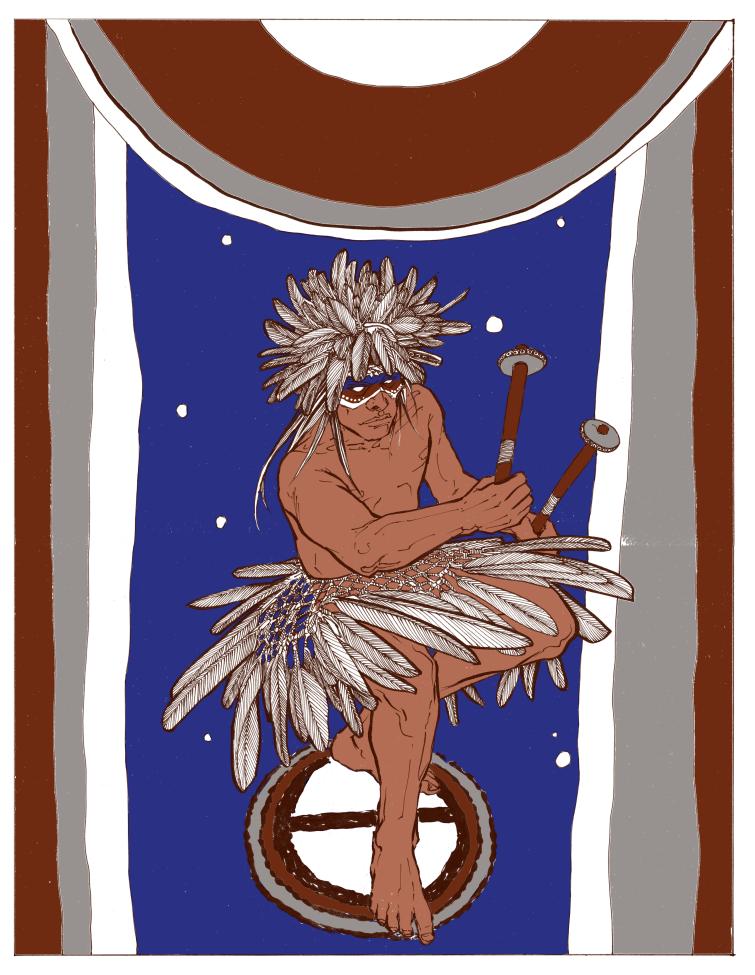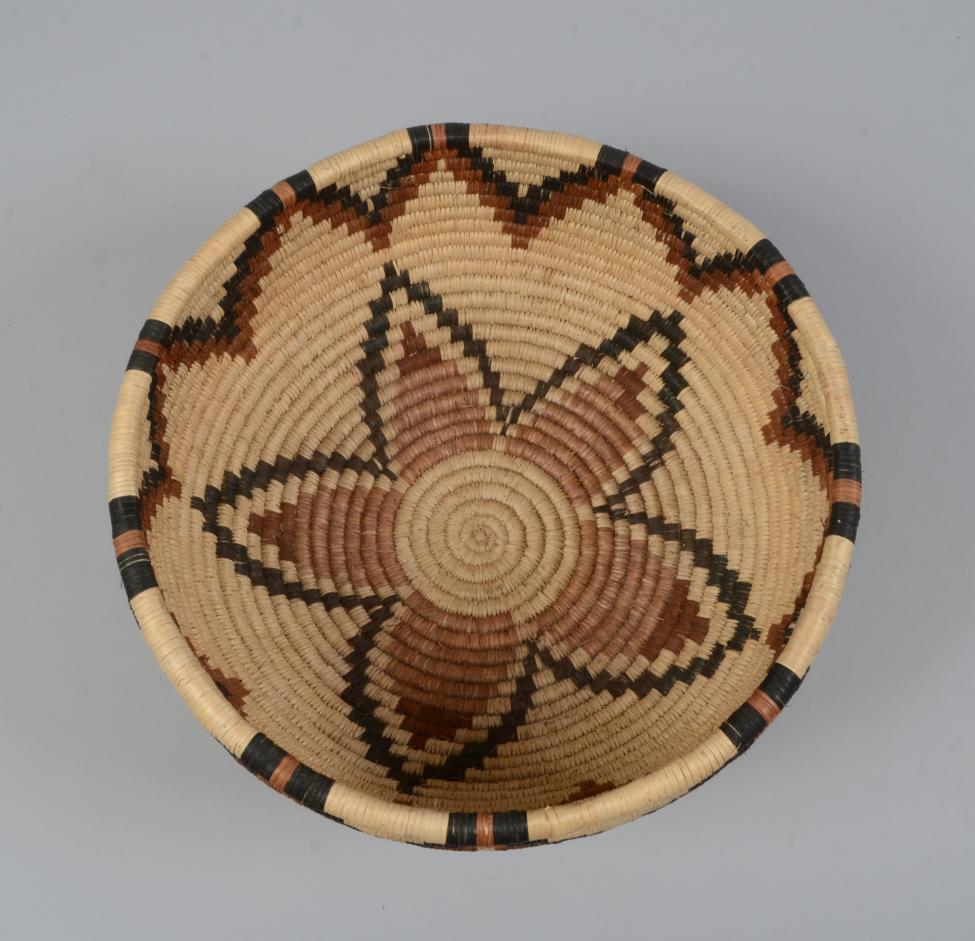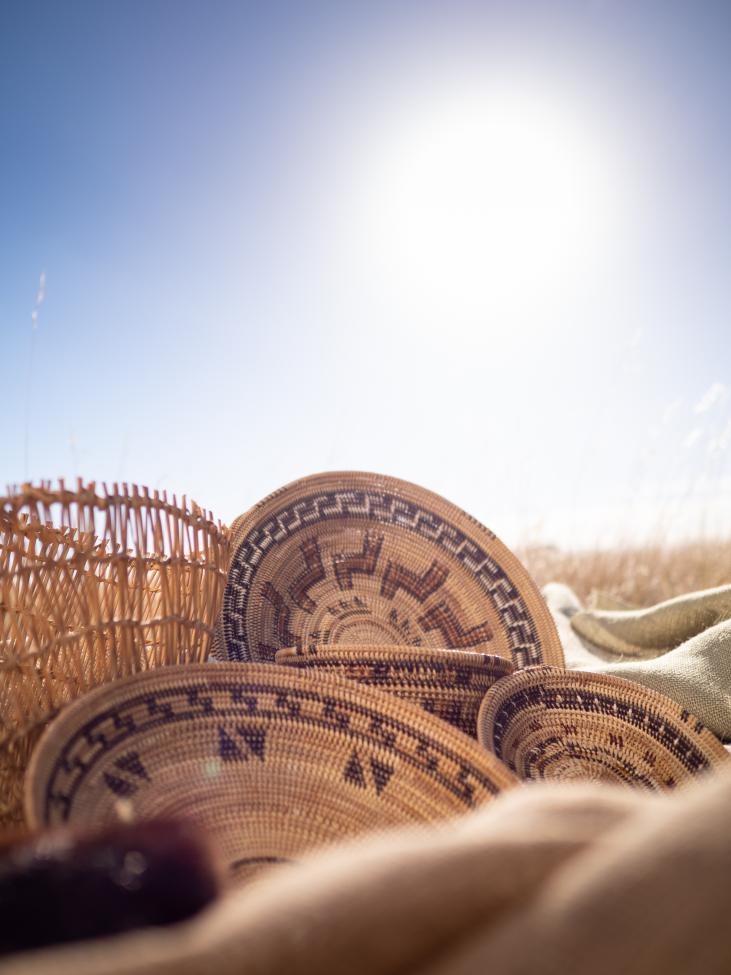“Like veins in our bodies, our roads and routes keep us alive, we are connected to the land and by the land—and the roads between us keep us connected to each other.” — Deana Dartt, Coastal Band, Chumash and Descendant of Soldiers/Settlers
Native people of the west coast of North America, like Indigenous peoples everywhere, thrived as complex, interrelated cultures with sophisticated ecological knowledge, extensive trade networks, and abundant terrestrial and marine resources. Those important connections informed every part of life prior to contact with outsiders. Deep relationships between people, the earth, and the sea defined, sustained, and supported creativity and beauty. Connectivity and interdependence can be seen in the stories Native people told and continue to tell, which define and explain their roles in the complex web of life. In contrast to a popular idea of “Natives at one with Nature,” the authentic interdependence practiced here on the coast hinged on sustained relationships informed by respect and reciprocity. Over thousands of years, those long-term connections allowed for the development of sophisticated knowledge, and those linkages are reflected in all aspects of material culture. In addition to a diversity of cultures, languages, and lifeways among the people sharing this abundant landscape were nonhuman populations. Those travelers included grizzly bears, pronghorn antelope, jaguars, gray whales, monarch butterflies, and thousands of additional species. This abundance, these connections, and the land itself defined the People.
